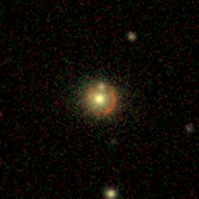BBC stargazing live 2014 is just about to start - let us watch the results!
-
 by
Budgieye
moderator
by
Budgieye
moderator
Thursday Jan9 2014 from 8-9 GMT See you again at 9:30
Posted
-
cant wait hope i get announced as i only 14 and a massive fan of both daras and brians plus i love astronomy
Posted
-
 by
Budgieye
moderator
by
Budgieye
moderator
Stargazing Live 2015 / solar eclipse in North Atlantic / Snaphot Supernova
Brian Cox also showed the completed paper to the camera, which was the Stargazing Live 2014 citizen science project.
The Red Radio Ring: a gravitationally lensed hyperluminous infrared radio galaxy at z=2.553 discovered through citizen science

http://talk.spacewarps.org/#/subjects/ASW0009io9
J. E. Geach (Hertfordshire), A. More, A. Verma, P. J. Marshall, N. Jackson, P.-E. Belles, R. Beswick, E. Baeten, M. Chavez, C. Cornen, B. E. Cox, T. Erben, N. J. Erickson, S. Garrington, P. A. Harrison, K. Harrington, D. H. Hughes, R. J. Ivison, C. Jordan, Y.-T. Lin, A. Leauthaud, C. Lintott, S. Lynn, A. Kapadia, J.-P. Kneib, C. Macmillan, M. Makler, G. Miller, A. Montana, R. Mujica, T. Muxlow, G. Narayanan, D. O Briain, T. O'Brien, M. Oguri, E. Paget, M. Parrish, N. P. Ross, E. Rozo, E. Rusu, E. S. Rykoff, D. Sanchez-Arguelles, R. Simpson, C. Snyder, F. P. Schloerb, M. Tecza, L. Van Waerbeke, J. Wilcox, M. Viero, G. W. Wilson, M. S. Yun, M. Zeballos
(Submitted on 19 Mar 2015)
We report the discovery of a gravitationally lensed hyperluminous infrared galaxy (L_IR~10^13 L_sun) with strong radio emission (L_1.4GHz~10^25 W/Hz) at z=2.553. The source was identified in the citizen science project SpaceWarps through the visual inspection of tens of thousands of iJKs colour composite images of Luminous Red Galaxies (LRGs), groups and clusters of galaxies and quasars. Appearing as a partial Einstein ring (r_e~3") around an LRG at z=0.2, the galaxy is extremely bright in the sub-millimetre for a cosmological source, with the thermal dust emission approaching 1 Jy at peak. The redshift of the lensed galaxy is determined through the detection of the CO(3-2) molecular emission line with the Large Millimetre Telescope's Redshift Search Receiver and through [OIII] and H-alpha line detections in the near-infrared from Subaru/IRCS. We have resolved the radio emission with high resolution (300-400 mas) eMERLIN L-band and JVLA C-band imaging. These observations are used in combination with the near-infrared imaging to construct a lens model, which indicates a lensing magnification of ~10x. The source reconstruction appears to support a radio morphology comprised of a compact (less than 250 pc) core and more extended component, perhaps indicative of an active nucleus and jet or lobe.
Comments: 9 pages, 7 figures, submitted to MNRAS
Subjects: Astrophysics of Galaxies (astro-ph.GA); Cosmology and Nongalactic Astrophysics (astro-ph.CO)
Cite as: arXiv:1503.05824 [astro-ph.GA]
(or arXiv:1503.05824v1 [astro-ph.GA] for this versihttp://arxiv.org/abs/1503.05824
http://arxiv.org/pdf/1503.05824v1.pdf pdf version
Posted